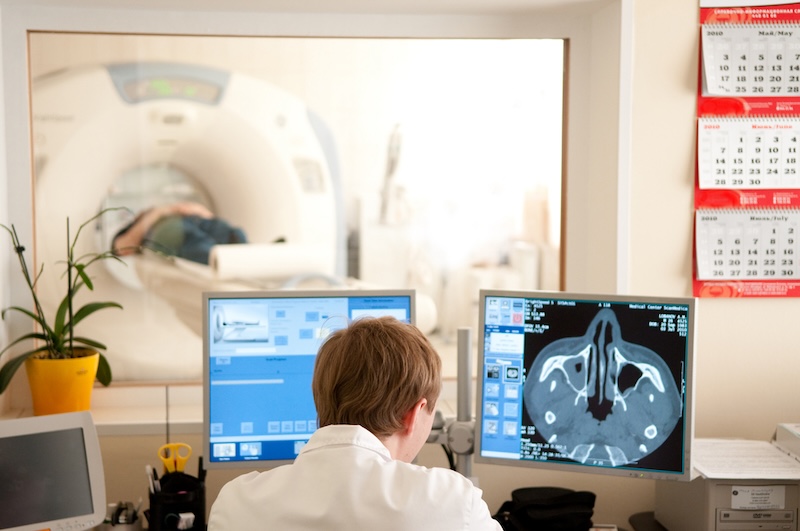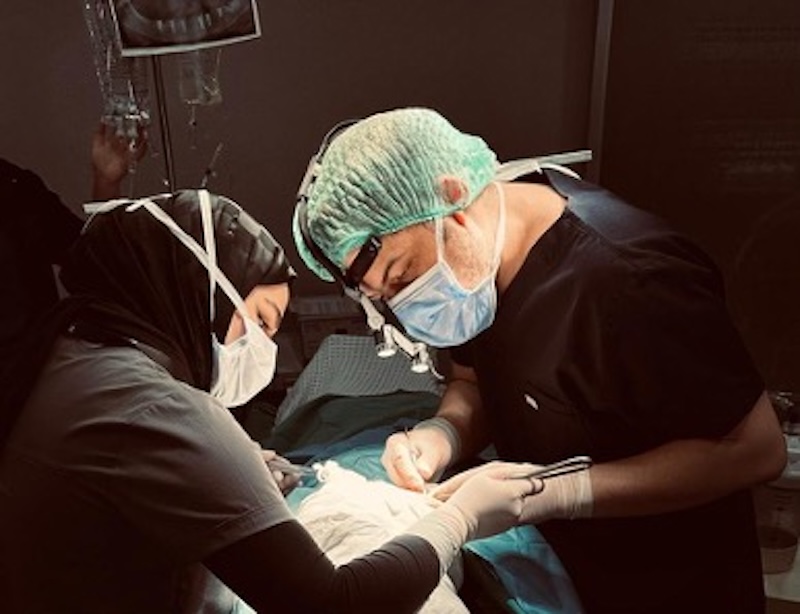Branded Content by Cosmic Press
Ever had that nagging toothache and wondered if it’s more than just a simple cavity? Maybe your dentist suggested a dental CT scan, but the question in your mind is “How long does a dental CT scan take?”
Well, buckle up! We’re about to dive into this high-tech world of dentistry. Just imagine yourself comfortably sitting on an examination chair with the cone beam ct scanner rotating around you. The hum of advanced technology at work, creating detailed images of not only your teeth but also soft tissues and nerve pathways – all within minutes.
Does 30 minutes sound like too much? Well, think again because this quick trip around your jaw can reveal issues from impacted teeth to temporomandibular joint disorder or even help plan for those perfect dental implants.
This post doesn’t just focus on timing. It goes beyond, delving into the specifics and intricacies that you’re eager to understand.
How Long Does a Dental CT Scan Take?
Many patients wonder about the duration of a dental cone beam CT scan. In general, this advanced imaging technique is quicker than you might expect. A standard dental CT, or CBCT scan, usually completed in just 30 minutes.
Preparation for a Dental CT Scan
No special aftercare is needed and you can return to your usual activities immediately after the procedure. You’ll appreciate that little preparation time is required before the scan starts; simply dress comfortably and be ready to sit still while the machine rotates around your head.
Post-Scan Activities
Once the scan is complete, you can get back to your normal activities without delay. There’s no need for any recovery period following this non-invasive process – an added bonus when considering its high-quality images.
This quick turnaround allows dentists more time to analyze results and plan dental treatments accurately using detailed views provided by these beam ct scans.
Understanding Dental Cone Beam CT Scans
The realm of dental imaging has been revolutionized by the advent of dental cone beam computed tomography (CBCT). This advanced technology allows for high-quality images that provide more details than conventional X-rays.
The Technology Behind Dental Cone Beam CT Scans
Dental CBCT, also known as cone beam computed tomography, works in a unique way. It uses an x-ray beam shaped like a cone to produce multiple images or views. These are then combined into one single 3D image providing clear and precise visualization of both hard and soft tissues in the oral cavity.
This exactness makes it invaluable when planning treatments involving implants or assessing issues with teeth and jaw structures such as temporomandibular joint disorders. The versatility doesn’t stop there though; it’s also useful for analyzing nerve pathways, inspecting impacted teeth, aiding cosmetic dentistry procedures, and even helping fit hearing aids.
Learn more about what is Dental Cone Beam CT here.
The Benefits of Dental Cone Beam CT Scans
Dental cone beam CT scans are a game-changer in the world of dentistry. But why? Well, they offer lower radiation exposure and improved treatment planning compared to conventional CT scans.
Safer Imaging with Lower Radiation Exposure
No one wants unnecessary radiation, right? With dental cone beam CT scans, you can say goodbye to that worry. These nifty machines use a cone-shaped x-ray beam, which reduces your exposure to harmful rays.
In fact, the amount of radiation from these scans is lower than what you’d get from just existing on Earth for 6 to 30 days. Talk about making safety sexy again.
Improved Treatment Planning
Better images mean better treatments. It’s as simple as that. The detailed images produced by this advanced technology give your dentist everything they need for precise treatment planning.
If we’re talking implants or treating temporomandibular joint disorder (yeah, it’s a mouthful), nothing beats the precision offered by dental cone beam computed tomography.
What to Expect During a Dental Cone Beam CT Scan
If you’re about to undergo a dental cone beam CT scan, you might be wondering what the process entails. Rest assured, it’s quite straightforward.
Dressing for a Dental Cone Beam CT Scan
To ensure your comfort during the procedure, opt for comfortable clothing. Loose-fitting garments are best as they let the machine rotate smoothly around your head. No special plate is required for this type of scan unlike other imaging techniques.
The Scanning Process
The actual scanning part of the procedure involves capturing high-quality images of soft tissues and nerve pathways in your mouth using advanced technology like ct imaging. You’ll need to stay still throughout; moving can distort the images and lead to less accurate results.
You won’t feel any discomfort during this time – but if nerves kick in, remember that knowledge is power. Learning more about what will I experience during and after the procedure? can help put those fears at ease.
Comparing Dental Cone Beam CT Scans to Other Imaging Techniques
But how do they compare?
Comparison with Traditional Dental X-Rays
The humble dental x-ray has served us well, providing cost-effective dentistry for decades. Yet its limitations become clear when we see the detailed images produced by a cone beam CT scan.
Cone beam computed tomography creates an exact shape of your mouth’s soft tissues and nerve pathways, giving more than just a glimpse into regular dental issues like impacted teeth or joint disorder.
Unlike the two-dimensional perspective offered by traditional panoramic views in standard x-rays, this advanced technology provides three-dimensional information about oral structures which is vital in planning procedures such as implants or cosmetic dentistry.
Radiation exposure is still a factor to consider; it’s something that can’t be overlooked. However, you might be surprised to learn that getting a cone beam CT scan gives off roughly the same amount of radiation as 6 to 30 days of background radiation from our natural environment.
Conclusion
So, you’ve journeyed with us through the world of dental CT scans. You now know that a dental CT scan takes about 30 minutes. Not too long for such an informative trip around your jawline, right?
You also discovered the benefits and intricacies of cone beam computed tomography. This advanced technology can help reveal hidden issues like impacted teeth or temporomandibular joint disorder.
Beyond this, we compared these high-quality images from a cone beam ct scanner to traditional x-rays – all while exposing you to less radiation! Now that’s some impressive tech!
So remember: when it comes to understanding what’s happening in our mouths for better health decisions – whether planning dental implants or detecting potential disorders – knowledge is power.
Dental CT scans are here not just as tools but allies on our journey towards better oral health.
Branded content furnished by our promotional partners. The Daily Sundial editorial staff is not involved in its production. Content does not reflect the views or opinions of the editorial staff.








